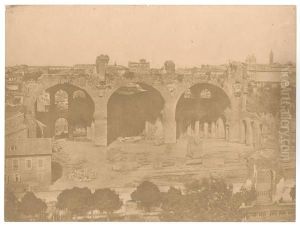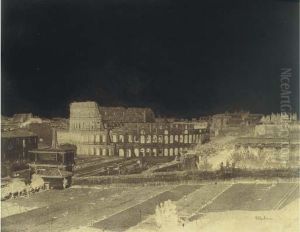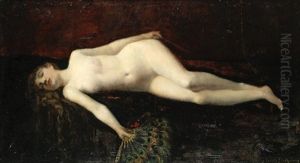Frederic, Comte Flacheron Paintings
Frederic, Comte Flacheron was a French artist and photographer born in 1813. Mostly recognized for his work in the mid-19th century, Flacheron was an accomplished landscape painter before he became one of the early adopters of the then-novel medium of photography. Flacheron's artistic journey began with traditional forms of art, honing his skills in painting, which allowed him to develop a keen eye for composition and lighting – elements that would greatly influence his photographic works.
During his painting career, Flacheron would have been influenced by the Romantic movement, which was prevalent during the early part of the 19th century. Romanticism emphasized emotion and individualism, as well as glorifying the past and nature. It's likely that these themes found their way into Flacheron’s landscape paintings, which would have focused on the grandeur and beauty of the natural world.
As the Industrial Revolution brought technological advancements, photography emerged as a new art form, and Flacheron transitioned into this field. His work in photography was marked by the use of the daguerreotype process, which was the first publicly available photographic process and was widely used until the late 1850s. Flacheron's status as a count suggests that he had the means to pursue this expensive and technical hobby, which at the time was the purview of the affluent and the innovative.
Flacheron's contributions to early photography included both urban and rural landscapes, and his painterly background influenced the aesthetic of his photographs. He was known for his attention to detail and his ability to capture the atmosphere of a scene, qualities that made his work stand out in the early days of photography.
The count died in 1883, by which time photography had evolved significantly. His legacy would be as an early pioneer of the medium, who brought the sensibilities of a landscape painter to the nascent art form of photography. Although not as widely known as some of his contemporaries, Flacheron's work remains a testament to the rich interplay between different artistic disciplines and the evolution of visual representation in the 19th century.


